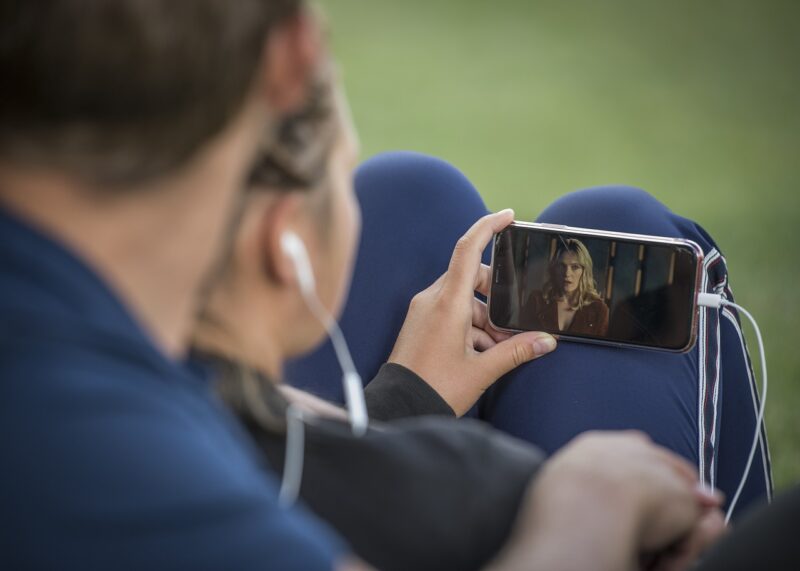
YouTube, the ubiquitous video-sharing platform launched in 2005, has fundamentally transformed how we consume and interact with digital content. From its humble beginnings, it has evolved into a cultural phenomenon that influences media consumption habits worldwide. With billions of active users and an extensive array of creators, YouTube has disrupted traditional forms of entertainment, education, and communication.
1. The Rise of YouTube: A New Era of Content Consumption
When YouTube was founded, it offered a revolutionary way for anyone to upload videos and share them with a global audience. This democratization of video content creation meant that individuals no longer needed significant resources or networks to produce and distribute media. In many ways, it was a precursor to the social media explosion that followed.
In the early days, YouTube featured mostly amateur videos, ranging from personal vlogs to home videos. However, as its popularity grew, so did the quality and diversity of content. This paved the way for a new breed of online stars, known as YouTubers, who built massive followings based on their creativity, personality, and engagement with viewers.
Today, YouTube features content spanning countless genres—vlogs, tutorials, reviews, live streams, and short films—making it a versatile platform for various types of content seekers.
2. The Impact of User-Generated Content
One of the most significant shifts in content consumption is the rise of user-generated content (UGC). Users can now create, share, and promote their videos without needing a production team. This shift has resulted in a more diverse range of voices and perspectives on the platform.
- Community Engagement: YouTube has enabled direct interaction between creators and their audience through comments, live chats, and social media. This two-way communication allows creators to build loyal communities and receive instant feedback on their content.
- Viral Trends: The platform has incubated many viral trends, challenges, and memes, leading to content that reflects current cultural conversations and interests. The rapid spread of trends has become a hallmark of YouTube, shaping how content is consumed and shared across the internet.
- Peer Influence: With the rise of influence marketing on YouTube, the platform has redefined how brands connect with consumers. Users often rely on recommendations from their favorite creators over traditional advertisements, leading to more authentic interactions around products and services.
The power of user-generated content has changed the perception of who can be a creator, showcasing that anyone with a smartphone can potentially become a star.
3. YouTube and the Evolution of Entertainment
YouTube has redefined the entertainment landscape, affecting television and film industries in several ways:
- Accessibility and Affordability: YouTube provides free access to a vast library of content. As such, it has become a popular alternative to traditional cable TV and streaming services, particularly among younger audiences who prefer on-demand viewing without upfront costs.
- Diverse Formats and Genres: The platform offers a range of leading content styles—from short videos to in-depth documentaries—catering to varied interests. As a result, audiences now have more flexibility in how they engage with content than ever before.
- Independent Creators and Disruption of Traditional Models: Independent filmmakers and artists can reach their target audience directly through YouTube without going through traditional gatekeepers. This has disrupted conventional film and television production models, allowing creativity and innovation to flourish.
In summary, YouTube has become a central hub for entertainment, influencing how creators produce content and how audiences consume it.
4. The Role of Education on YouTube
YouTube has emerged as an influential educational tool, facilitating self-directed learning in ways previously unimaginable. Channels offering tutorials, DIY projects, and instructional content cater to diverse audiences, from students to professionals.
- Global Learning Opportunities: Educational content on YouTube transcends geographical boundaries, providing access to knowledge that may not be available locally. Viewers can learn new skills, explore academic subjects, or receive training in various fields at their pace.
- Visual Learning Advantage: Video is a dynamic medium that often engages viewers better than text-based resources. Tutorials and demonstrations let learners see practical applications, making information easier to understand and retain.
- Unique Learning Communities: The platform allows for the formation of learning communities where users can discuss ideas, share tips, and collaborate on projects. This way, learners can benefit from peer insights and support, enhancing their educational experience.
As a result, YouTube has become a powerful tool for lifelong learning, supplementing formal education with diverse resources and peer support.
5. The Challenge of Information Overload
While YouTube has created opportunities, it has also introduced challenges, particularly around information overload. The vast amount of content available can overwhelm users and make it difficult to find high-quality, trustworthy information.
- Quality Control Issues: Unlike traditional media, the bar for content creation on YouTube is relatively low. This absence of regulation means viewers must sift through vast amounts of content to find credible, high-quality videos. Misinformation can spread rapidly, making it essential for users to critically evaluate sources and claims.
- Addiction and Time Management: The continuous availability of new content can encourage excessive viewing. It’s common for viewers to fall down the ‘YouTube rabbit hole,’ leading to time management challenges that impact productivity and well-being.
- Algorithm Influence: YouTube’s recommendation algorithms significantly influence what viewers see, which can create echo chambers and reduce exposure to diverse perspectives. Users may inadvertently limit their understanding of broader issues based on the content they interact with most frequently.
To mitigate these challenges, users must practice discernment and make conscious choices about their viewing habits.
Conclusion: The Future of YouTube and Content Consumption
YouTube has undoubtedly redefined how we view content and has become an integral part of our daily lives. It has transformed entertainment, education, and social engagement, rising to the forefront of digital media.
As we look ahead, it’s clear that YouTube will continue to evolve, integrating new technologies like virtual reality and live streaming, broadening its impact on how we interact with digital content. With that evolution will come ongoing challenges regarding quality, misinformation, and user behavior, requiring users to remain vigilant and critical of the content they consume.
Ultimately, YouTube remains a powerful force in shaping modern content consumption, an ongoing testament to the democratization of media and the rise of the digital creator economy.








